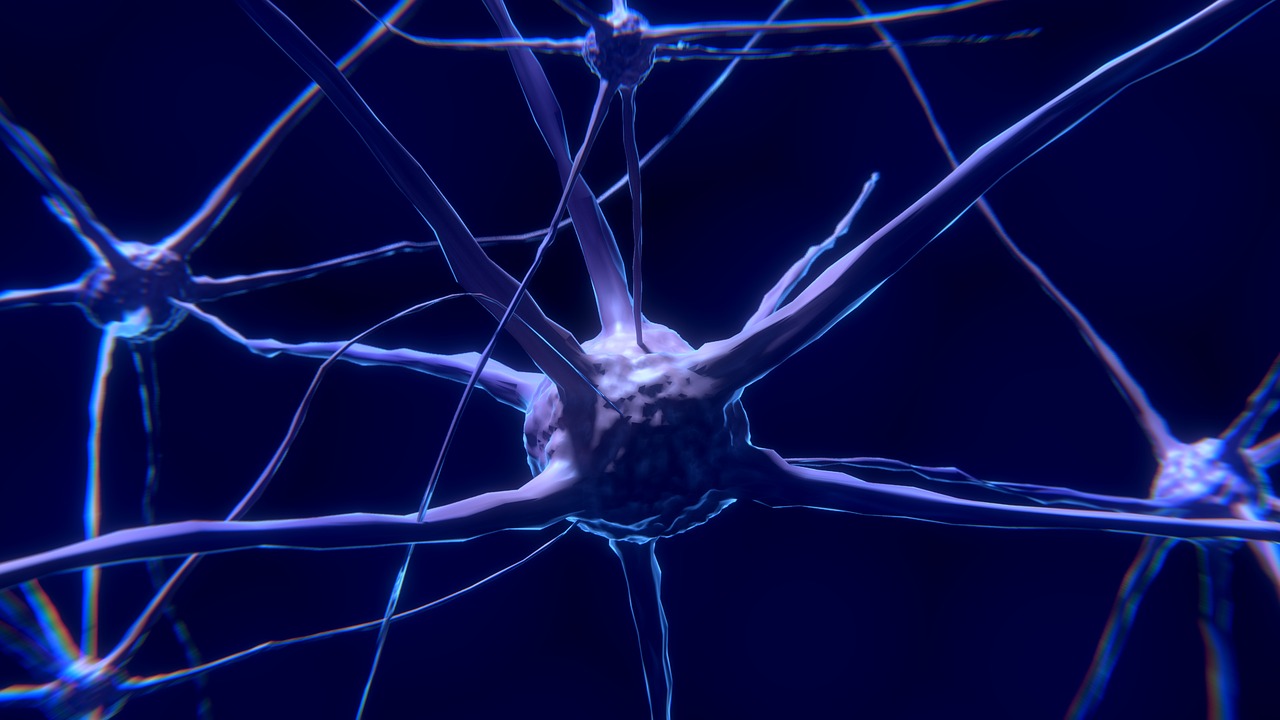
What is multiple sclerosis?
Multiple sclerosis or MS is a long-lasting auto-immune disorder. It is caused by the immune system attacking the myelin, or fatty covering around nerves. Nerves without their protective myelin get damaged and scarred. They can’t transport signals between body and brain properly. This leads to symptoms like
- pain
- fatigue
- depression
- muscle weakness or spasms
- blurry or double vision
- numbness and tingling
- loss of bladder or bowel control
- memory problems
There are multiple types of MS:
- Relapsing-Remitting MS, where symptoms alternate between getting worse (relapses/flares) and then recovering (remissions). RRMS accounts for 85% of first diagnoses.
- Secondary-Progressive MS, where symptoms worsen steadily over time. Patients with SPMS may or may not experience relapses and remissions. Most people diagnosed with RRMS will eventually transition to SPMS.
- Primary-Progressive MS, where symptoms slowly get worse without relapses or remissions. PPMS is not as common as RRMS and SPMS above. It usually develops in older patients, above the age of 40.
- Progressive-Relapsing MS, where patients face acute symptom relapses but no remissions. PRMS is rare, affecting only about 5% of patients.
Multiple sclerosis usually starts to develop between age 20-40. It can affect different people in different ways. Those with mild symptoms may not need treatment. Others may have trouble moving and doing daily tasks.
What are current treatments for multiple sclerosis?
Currently, there is no cure for MS. Treatment plans may include a mix of the following:
- Disease-modifying drugs which prevent flares and slow the progression of MS. They suppress the immune system so it doesn’t attack myelin. Some examples include beta interferons, dimethyl fumarate, glatiramer, mitoxantrone, natalizumab and ocrelizumab.
- Steroids to calm down symptom flares. Steroids do not stop the progression of the disease.
- Plasma exchange, if the body does not respond to steroids. This involves taking blood, separating the liquid part or plasma from the rest, mixing it with a protein solution, and transfusing it back into your body.
- Symptom control for muscle stiffness, fatigue, depression and bladder problems
- Physical therapy
What are the current (assistive) technologies available to help?
Larger, softer grips on utensils, grab bars and reacher devices can help make daily functions easier to perform. Wheelchairs, both motorised and not, may be of use if you have difficulties moving around. An occupational therapist, if you have access to one, can help you plan how to further modify your living spaces.
Functional electrical stimulation (FES) devices help to deliver small electrical pulses to nerves and muscles. These can help make movement smoother and easier. While currently available in a few forms, the results of using FES devices may vary from person to person.
When MS affects the senses, eyepatches, hearing aids, and devices like them can make it easier to navigate the world. For those whose speech is affected by their MS, AAC and text-to-speech systems can help with communication.
What does the future hold for people with MS?
There are several strategies being considered to stop the progress of MS, repair the damage it causes, and help those already facing nerve damage. Stem cell therapy shows some promise as treatment. Because stem cells can self-renew and become different types of cells within the body, they could be adjusted to become myelin-producing cells to repair damage around the nerves.
Researchers are looking into more ways to repair myelin, the protective coating around nerves. They are also studying the genetic causes of MS to tailor gene therapy to patients, or adjust treatments depending on their genes.
Robotic exoskeletons, which strap around the legs, can help people with MS move more efficiently, stay active, and continue physical therapy to prevent muscle loss.
Studies have also suggested it might be possible to create synthetic speech based on the recorded brain activity of MS and other people with neurological disorders.
Conclusion
Multiple sclerosis is currently a progressive disease without a full cure, but there are ways to control its effects. More methods to treat and control it being developed. The disease does not mean the end of the world – only a change in the way a life is lived.
(3 June 2019)
Alberto M. (2019) Machine System Based on Brain Activity May Restore Speech to Those Who Lost It, Study Reports [Accessed: 19 June 2019] Available at: https://multiplesclerosisnewstoday.com/news-posts/2019/04/24/synthetic-speech-generated-from-brain-recordings/
Bayer Health Care (2009) Types of MS and MS Treatment Options [Accessed: 19 June 2019] Available at: https://www.multiplesclerosis.com/us/treatment.php
Becca H. (2017) 5 Areas of Research That Could Change the Future of MS Treatment [Accessed: 3 June 2019] Available at: https://multiplesclerosisnewstoday.com/2017/07/17/areas-research-future-ms-treatment/
Donna J.B., MD, Cathy B., PhD, CCC-SLP (2002) An overview of assistive technology for persons with multiple sclerosis [Accessed: 3 June 2019] Available at: https://www.rehab.research.va.gov/jour/02/39/2/Blake.htm
Emma Y. (2019) UK Team to Test Robot-assisted Exercise to Improve Balance in MS Patients [Accessed: 19 June 2019] Available at: https://multiplesclerosisnewstoday.com/2019/03/07/uk-team-to-test-robotic-exercise-to-improve-balance-in-ms-patients/
Icahn School of Medicine at Mount Sinai (2016) Robotic Exoskeletons for Multiple Sclerosis [Accessed: 19 June 2019] Available at: http://labs.icahn.mssm.edu/brycelab/robotic-exoskeletons-for-multiple-sclerosis/
Mike K. (2016) Out on a Stim: The Pros and Cons of FES Devices (Part 1) [Accessed: 19 June 2019] Available at: https://multiplesclerosisnewstoday.com/2018/05/23/ms-impeded-walking-helped-fes-devices-walkaide-bioness/
Multiple Sclerosis News Today (2016) Assistive Devices for Multiple Sclerosis Patients Can Help [Accessed: 3 June 2019] Available at: https://multiplesclerosisnewstoday.com/multiple-sclerosis-medical-devices/
Multiple Sclerosis Trust (2018) Cure for MS [Accessed: 3 June 2019] Available at: https://www.mstrust.org.uk/a-z/cure-ms
Nina B. (2017) New multiple sclerosis drug, backed by 40 years of research, could halt disease [Accessed: 3 June 2019] Available at: https://medicalxpress.com/news/2017-03-multiple-sclerosis-drug-years-halt.html
WebMD (2019) Make Your Home Work for You When You Have MS [Accessed: 19 June 2019] Available at: https://www.webmd.com/multiple-sclerosis/multiple-sclerosis-adapting-your-home#1
WebMD (2018) Treatments for Multiple Sclerosis [Accessed: 3 June 2019] Available at: https://www.webmd.com/multiple-sclerosis/ms-treatment
WebMD (2009) What Are the Different Types of Multiple Sclerosis? [Accessed: 19 June 2019] Available at:
https://www.webmd.com/multiple-sclerosis/multiple-sclerosis-understanding-the-differences-in-ms#1
WebMD (2019) What Is Multiple Sclerosis? [Accessed: 3 June 2019] Available at: https://www.webmd.com/multiple-sclerosis/what-is-multiple-sclerosis